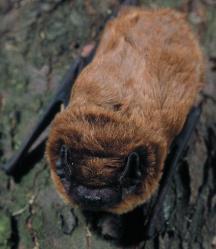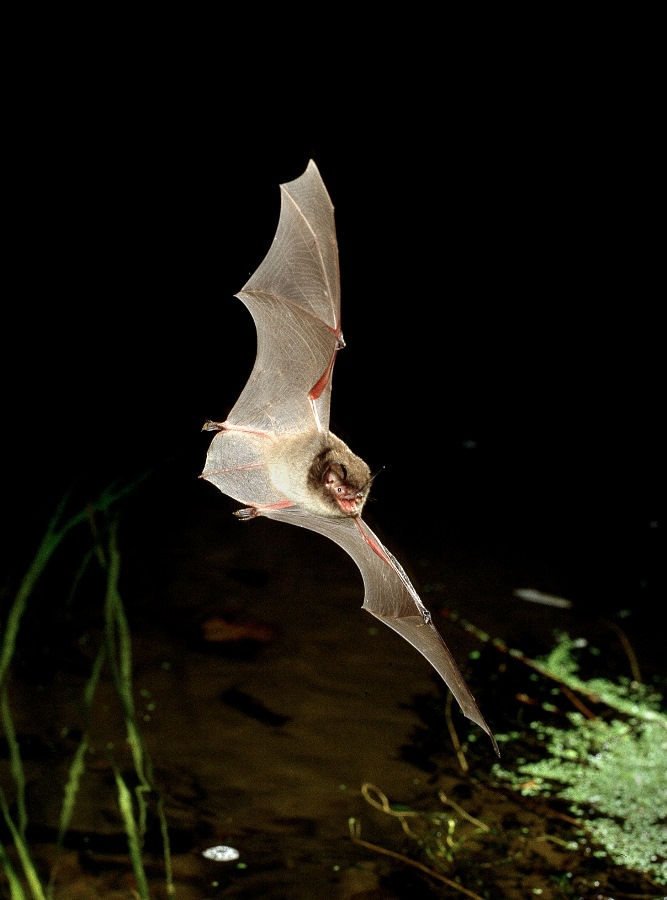31 October 2021
Halloween – What do you know?
With Halloween upon us, Teagasc Daily asks the question: What do you know about pumpkins, bats and turnips? On Oíche Shamhna (Halloween night) long before pumpkin carving, the humble turnip was traditionally carved out. And hear what Éanna Ní Lamhna has to say on bats on the Environment Edge podcast
Pumpkins – What do you know?

Pumpkins are a half-hardy crop that is grown for Halloween. Originating in the tropical regions of the American continent, pumpkins are closely related to squash, marrow and courgette. They are round to oval in shape and vary in colour from yellow, orange through to white. They are susceptible to cold in the early part of the season; hence the crop is normally propagated under cover and transplanted out after the last frosts. A marginal crop for Ireland – you’ll experience good years and bad years depending on the weather.
Download information about Pumpkins here (PDF)
Bats – What do you know?

Leisler’s bat (Photo: Eddie Dunne)
Some people are afraid of bats probably because they are nocturnal and due to the many myths about bats. Bram Stoker hasn’t helped the cause with all those wonderful horror films! However there is no rational reason to fear bats. Bats are an individual mammal group not related to rodents in any way but are more closely related to humans. They give birth to a single pup per year when the females form maternity roosts and like all mammals, suckle their young. They are the only true flying mammal in the world and are found all across the world apart from the north and south polar caps
Bats in Ireland are very small – the body of a pipistrelle is typically the size of your thumb, but the wingspan is about 25cm. Our biggest bat is the Leisler’s bat and this bat will fit into the palm of your hand but has a wingspan of 32cm. There are nine species of bat in Ireland.
Bats have an important role in the natural ecosystem, keeping insect populations in balance. They are a very good indicator of how good our habitats are. A healthy population of bats tends to indicate that the area is in good environmental condition.
Bat Conservation Ireland is a small wildlife charity dedicated to the conservation of bats in Ireland. There are lots of resources for people to learn about bats. Bat Conservation Ireland runs the Irish Bat Monitoring Programme and volunteer participation in this programme is an ideal way to learn more about bats. The Daubenton’s bat waterway survey takes place annually in the month of August where people can learn how to use bat detectors to monitor bats themselves and survey their local waterway. For children and primary schools, Bat Conservation Ireland have a free education resource through the website www.learnaboutbats.com

Daubenton’s bat (Photo: F. Greenway)
Recent surveys in Kildalton College recorded 7 of the 9 species of resident bats, present on the college farm, indicating a rich habitat biodiversity. Bats recorded in Kildalton college included: Leisler’s bat, brown long-eared bat, Daubenton’s, Natterer’s bat and the three pipistrelle bats. Bat activity was very high over a pond adjacent to woodland which also has good connectivity with hedgerows. They were recorded commuting along hedgerows and within woodland. There was low bat activity in open fields with the fast flying Leisler’s bat being the only bat which can fly in the open landscape. Bats prefer to commute along linear habitats such as hedges, watercourses and the edge of woodland because they use echo location (sonar) to guide them. Soprano pipistrelles and common pipistrelles were recorded in the woodland and in the orchard. Daubenton’s bats were associated with the pond. All Irish bats eat insects. The small pipistrelle bats eat up to 3,000 insects every night, ensuring a build up of fat to allow them survive the winter deep in hibernation.
Learn lots more about bats in Bats and their habitats (PDF)
Listen to Éanna Ní Lamhna talk about bats and their habitats in the Environment Edge podcast
Éanna confirms whether Bram Stoker was correct in his assumptions about bats and vampires.
They also discuss why bats are so interesting, their role in ecology, how farmers can improve habitats and what you should do if you find one in your house.
For more episodes and information from the Environment Edge, visit the show page at: www.teagasc.ie/environmentedge
Turnips – What do you know?
On Oíche Shamhna (Halloween night) long before pumpkin carving became popular, the humble turnip was traditionally carved with scary faces to ward off evil spirits.
Turnips are a quick growing crop maturing in as little as 6 weeks from sowing. They come in a variety of shapes – flat, round or long – and in a variety of colours – purple, green or white.
It’s a versatile crop that can be harvested when small and eaten raw or left to grow in size and cooked; the tops can also be harvested like spring greens from a late summer sowing.
A small sowing should be made about every three to four weeks from March to August in drills 30 cm apart and 2 cm deep. Sow thinly and gradually thin out to 5-15 cm apart.
Start harvesting when they are golf ball sized for salads or grow on to tennis ball size for cooking.
The main problems will stem from attack by cabbage root fly, flea beetle and slugs. Your best bet is to cover the crop with fleece for the first two and a small amount of pellets to keep slugs at bay. As with any quick maturing crop water the crop during dry spells.
- Varieties
- Oasis, Purple Top Milan, Goldenball, Green Globe, Sweetbell F1
- Pests
- Flea beetle, cabbage root fly, slugs
- Diseases
- Downy mildew
Find out more here in Vegetable publications
Keep up to date with Teagasc Daily for lots more interesting articles on all aspects of Teagasc Advisory, Research and Education/Training.
